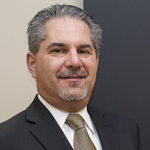Leading an IT team in the health-care industry isn’t just about apps and laptops. Alan Abramson, senior vice president and CIO of HealthPartners, brings a blend of nontraditional skills to the table, ensuring that technologies are able to bolster the company’s mission, which, in the case of HealthPartners, is the advancement of patient care and the improvement of clinical outcomes.
1. What were some of the early technology innovations your team implemented?
We followed the development of Epic Systems Corporation, a software company headquartered in the Madison, Wisconsin, area. They created a provider-based electronic medical record. By 2004, we had installed their software in our clinics and gone paperless. We had appointment scheduling electronically implemented, we had a call center to do appointment scheduling, and the electronic record was shared. So, if a patient went from a primary-care clinic to a specialist in the same delivery network, they had a single medical record that was shared across that spectrum. A couple years later, we installed the software for the inpatient side at Regions Hospital, a large, high-tech, tertiary-care center and teaching hospital with active emergency room and outpatient services, in St. Paul, Minnesota.
2. Can you describe a real-life situation where technology meets convenience?
A year or so ago, one of my family members had a laboratory test done to rule out a certain condition. When the results were ready, the technician sent them a text message, and they were able to view the results on their smartphone. This patient knew their test results were negative within 15 minutes of leaving the hospital. People today are accustomed to receiving all kinds of information through their smartphones—coupons from Starbucks, reminders of movies that are in town. Why should health care be any different?
3. How has your background influenced your role at HealthPartners?
I remember as a kid taking apart all kinds of appliances around the house that broke, to see how they worked and if I could fix them. My early jobs were with National Car Rental, where my dad was an executive. The application of computers for online reservation systems was just coming into the industry, and that’s where I became interested in information technology. In graduate school, I became fascinated by theories among sociologists and economics about the impact of technology on social change. I eventually moved into health care, thinking it would provide a good opportunity for the use of computerization and technology.
4. What impact has the growth of regulatory controls and data-privacy requirements had on IT groups in health care?
Five or six years ago, we discovered that in a single year we had nearly 75 audits, regulatory visits, and other information-gathering sessions by a combination of regulators, auditors, and security representatives from many of our customers. These were audits and information-gathering activities of the IT functions themselves inside the health-care system. We were ill-equipped to respond to that volume of activity, so we pulled together a dedicated team of people and developed a more formal approach to risk management.
5. What does it take to be a CIO in the health-care sector?
Different companies have different cultures, so there’s more than one way to be successful. In my career, I started with an interest in how technology changes social and organizational activity. Another aspect is understanding the styles of leadership and developing your own style. Then, understand where your blind spots and weaknesses are, and augment those with people that have strengths in those areas. And then there’s financial management. I don’t think anyone stays a CIO for long if they aren’t adept at managing the financial side of IT. It’s typically one of the largest expenditures in a company, and things can easily get out of hand if it’s not watched carefully.
6. Can a good sense of timing contribute to a CIO’s success?
A big part of the IT management function is to not buy technologies that are going to be a wasted investment. I look for opportunities to deploy things across the enterprise that will be high volume and high utilization, as opposed to just bringing in every new technology that comes along. It’s also quite interesting to me that technologies are often invented that go nowhere for a while, and then reawaken and become wildly successful. Some technologies, which in my view are old-fashioned and unneeded, sometimes gain momentum and actually become important. We think of the mobile phone as a recent technology, which is true in the form of the smartphone. But mobile-phone technology turns 40 years old in 2013, as we look back to its invention by Motorola.















